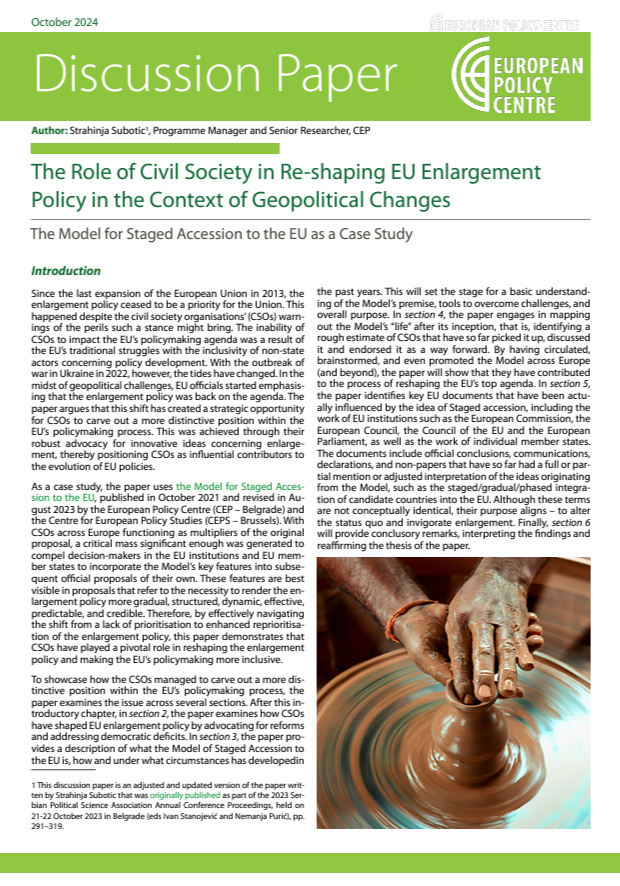Headquarters: Svetog Nauma 7, 11000
Office address: Đorđa Vajferta 13, 11000
Phone:: +381 11 4529 323
The Template on Staged Accession to the EU proposed in 2021 that funding for reforms and socio-economic development should substantially grow as (potential) candidate states improve their preparedness for membership, assessed annually by the European Commission. This proposal aims at incentivising politically sensitive reforms in the accession process while helping to gradually prepare beneficiaries for assuming membership obligations and opportunities in a gradual way.
The setting of the current third edition of the Instrument for Pre-accession Assistance (IPA) appears to be neither financially sufficient nor designed for such a purpose. The recent announcement of a four-pil-lar growth plan for the Western Balkans by the Commission President Ursula von der Leyen, which includes a decision to increase pre-accession assistance, provides a timely opportunity to reflect on the effectiveness of IPA III and design appropriate measures to improve it. The rationale behind the funding proposal in the Template is threefold.
Firstly, if the candidates are to catch up with the EU proper in terms of socio-economic development, they need much higher levels of funding as early as possible in the accession process. Secondly, the countries need to start preparing for the absorption of the European Structural and Investment Funds (ESIF) once they become members, to avoid a scenario in which they absorb small portions of available funds in the first years of membership due to lack of capacity. Thirdly, more substantial financial support for socio-economic development can create more public awareness and support for EU accession, as well as a stronger incentive for governments in the region to press on with the ambitious reform agenda.
As the original Template did not include details regarding the funding instruments and conditions for access to increased funding, this paper probes deeper into these issues and proposes different policy options for the funding facet of the staged accession model. The paper starts with an analysis of the present IPA III, from the perspective of preparation of its beneficiaries for EU membership and especially the use of ESIF, providing an analytical basis for the Staged accession funding model. In section III, it proceeds to a discussion of several policy options for introducing additional funding as interim incentives and benefits during the accession process. It also lays out in significant detail the preferred option, which includes a proposal for a fully reformed IPA IV, and assesses its advantages and disadvantages. In sections IV and V, the paper discusses proposals for conditioning and reversibility mechanisms as well as for the development of absorption capacities among candidates. It concludes by drawing attention to the major prerequisites that will decide if a new, staged approach to the provision of pre-accession assistance will make it or break it.


